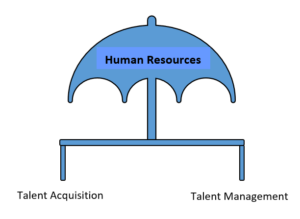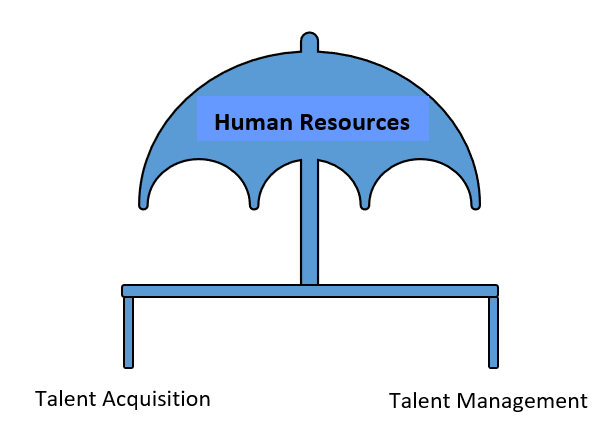Talent Management VS Talent Acquisition

What goes faster than a speeding bullet? Who jumps a tall building in a single bound? No, it’s not Super Man. It’s the fast changing and ever-evolving world of human resources. And understanding the nuances between terms like ‘talent acquisition’ and ‘talent management’ is crucial. The two terms might seem the same, but they serve distinct functions in the HR world.
Definitions
Talent Acquisition is the strategic approach to finding the right talent to fill gaps, focusing on long-term human resource planning, and finding appropriate candidates for positions that require a specific skill set. A tight focus on the kinds of people you need, well-defined job descriptions, and appropriate training can help with reducing attrition and improving retention.
Talent Management encompasses HR processes designed to manage and develop a company’s workforce. Starting with onboarding and continues throughout their time in the company.
The goal: Retaining top talent and maximizing employee potential.
Focused Scope
Talent Acquisition: Identifying gaps within the company and finding the right talent to fill them. The primary objective is to find candidates who not only have the required skill set as well as aligning with the company’s culture and values. These skill sets can range from soft skills to technical talents such as programming a CNC machine, operating a forklift, or working in an accounting and finance department.
Talent Management: Once onboarded, the focus shifts to ensuring growth and thriving within the organization. This involves understanding their strengths, providing them with the growth opportunities, and ensuring they are satisfied and engaged in their roles. Besides training and career development, it is important to consider a mentor program to help orient new staff to the company and help them feel comfortable.
Timing
Talent Acquisition: Is often seen as a reactive, triggered by immediate needs, such as a vacant position or a new project. The timeline is usually short, with a clear goal: to hire the right person within a certain timeframe.
Talent Management: Is a proactive and a continuous process. It’s about foreseeing future needs, succession planning, and ensuring that employees are equipped with the skills they need to meet current and future challenges. This is a long-term commitment, focusing on the entire employee lifecycle within the company.
What’s more important: Talent Management or Talent Acquisition?
You can’t have one without the other. If you attract and hire good employees but don’t invest in their development, you won’t be able to retain them or unleash their potential. Alternatively, if you want to create a training culture and build successful career paths, you need to start by recruiting top talent who are eager to learn and grow.
In Closing
Talent acquisition without management can lead to high turnover, and management without acquisition can result in skill gaps and stagnation. As organizations strive to attract, retain, and nurture top talent, it’s not just about filling positions in specific specialties; it’s about building a workforce that aligns with the company’s vision, and one that grows with it.
The Cardinal Culture
Cardinal Staffing Services is not just any staffing company, it is a place you can be inspired to reach the goal of your dreams. The Cardinal Culture is about empowerment. We treat our customers and candidates with respect, dignity, and appreciation. We know that sometimes a person just needs to be heard. To listen and to be given a chance. And when we do, we become their trusted source. We make positive decisions every day that impacts our valued clients, our candidates, and our communities. If you are ready for the job that’s truly right for you, Cardinal will find it. We are waiting to hear from you. Contact us today!
